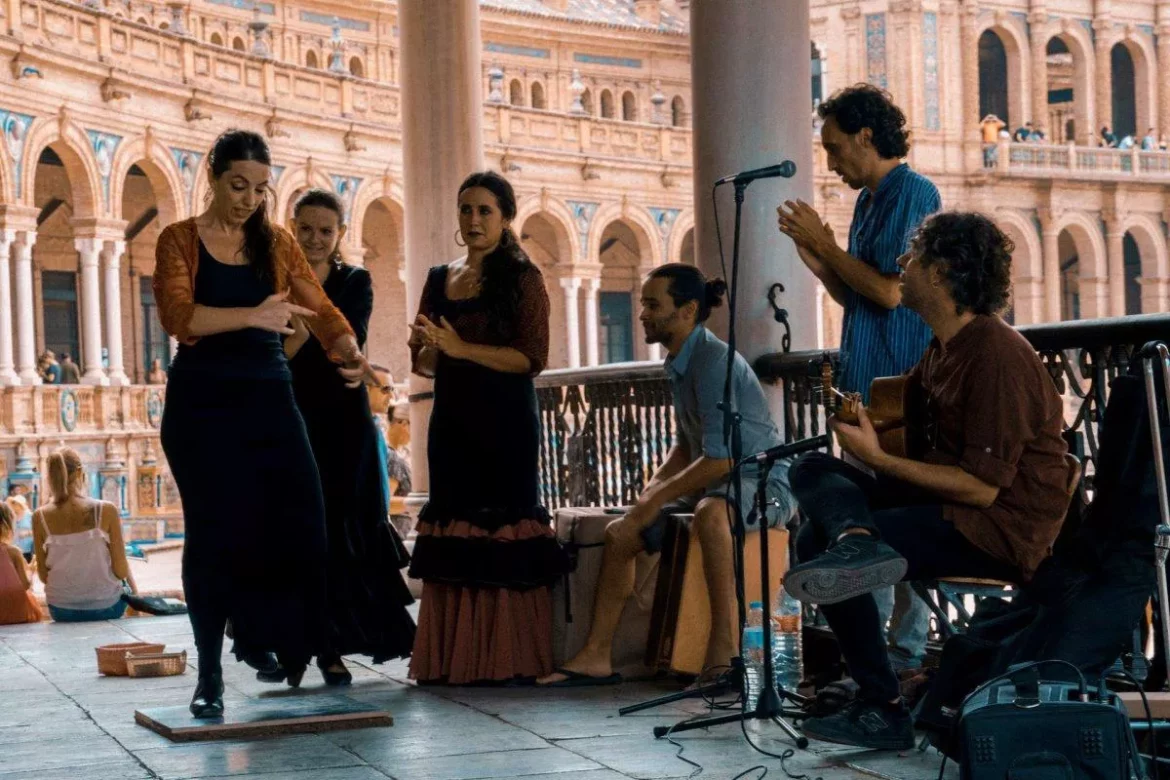Music has long been an essential part of Spanish culture, weaving itself into the very fabric of the nation’s identity. From the lively rhythms of Flamenco to the romantic melodies of Spanish guitar, music in Spain encompasses a vast and diverse spectrum. In this article, we embark on a musical odyssey, delving into the various genres and styles that define Spanish music.
Flamenco: The Heartbeat of Spain’s Musical Soul
When we think of Spanish music, one of the first genres that comes to mind is Flamenco. This iconic style, characterized by its passionate vocals, intricate guitar playing, and intense rhythmic patterns, is often considered the heartbeat of Spain’s musical soul. Flamenco originated in the Andalusian region of Spain and has since captured the hearts of music lovers worldwide.
Flamenco is a genre that can convey a wide range of emotions, from the raw intensity of “cante jondo” (deep song) to the exuberance of “bulerías.” The artistry of Flamenco lies in its ability to tell stories and evoke profound feelings through its music. Whether you’re captivated by the haunting vocals or the hypnotic footwork of the dancers, Flamenco is an immersive musical experience that speaks to the soul.
Spanish Guitar: A Melodic Elegance
No discussion of Spanish music would be complete without mentioning the Spanish guitar. This instrument has played a pivotal role in shaping the soundscape of Spain. Its rich, melodic tones have inspired countless musicians and composers across the globe. The Spanish guitar is versatile, capable of producing both soothing, mellow tunes and lively, rhythmic compositions.
The history of the Spanish guitar dates back centuries, with influences from various cultures, including the Moors and the Romans. Its distinctive sound is characterized by the use of nylon strings, which provide a warm and resonant tone. Artists like Andrés Segovia and Paco de Lucía have elevated the Spanish guitar to international acclaim, showcasing its incredible potential for artistic expression.
Rhythmic Diversity: From Rumba to Salsa
Spanish music extends beyond the boundaries of Flamenco and the Spanish guitar. Spain has also been a fertile ground for various rhythmic styles, some of which have intermingled with Latin American influences. One such genre is Rumba, known for its infectious beats and lively guitar strumming. Rumba has an unmistakable Spanish flavor that can transport listeners to the vibrant streets of Andalusia.
Additionally, the influence of Latin rhythms, such as Salsa, has made its mark on the Spanish music scene. Salsa is characterized by its energetic percussion and dance-inducing melodies. It has gained popularity in Spain, with Spanish musicians adding their own unique twist to this genre, creating a fusion that is both dynamic and infectious.
Traditional Folk Music: A Tapestry of Regional Sounds
Spain’s diverse regions each contribute their own unique tapestry to the country’s musical landscape. Traditional folk music varies from region to region, reflecting the distinct cultures and histories of places like Catalonia, Galicia, and the Basque Country. These traditions are deeply rooted in local customs and have been passed down through generations.
Catalan music, for instance, often incorporates the use of the “gralla,” a traditional Catalan double-reeded instrument, creating a distinctive and lively sound. In contrast, Galician music is characterized by its haunting bagpipes, which evoke a sense of melancholy and nostalgia. Exploring the traditional folk music of Spain is like embarking on a journey through time, discovering the stories and traditions of its people.
Contemporary Spanish Music: A Fusion of Styles
As with any thriving music scene, Spain has its fair share of contemporary artists who blend traditional elements with modern genres. Music in Spain today is a dynamic fusion of styles, with artists experimenting and pushing boundaries. From the indie pop of La Casa Azul to the electronic beats of El Guincho, Spanish music continues to evolve.
Furthermore, the global reach of Spanish-language pop and reggaeton cannot be ignored. Artists like Rosalía and Bad Bunny have achieved international stardom, infusing their music with Spanish lyrics and rhythms. This global appeal underscores the power of Spanish music to transcend cultural boundaries and resonate with audiences worldwide.
Conclusion: The Timeless Allure of Spanish Music
In conclusion, music in Spain is a captivating journey through a rich and diverse tapestry of sounds and styles. From the fiery passion of Flamenco to the enchanting melodies of the Spanish guitar, the rhythmic diversity of Rumba and Salsa, the regional traditions of folk music, and the ever-evolving contemporary scene, Spanish music has something to offer every discerning ear.
The allure of Spanish music lies not only in its ability to convey a wide range of emotions but also in its capacity to bridge cultures and connect people from all walks of life. Whether you are savoring the timeless classics or grooving to the latest hits, music in Spain is an experience that transcends borders and speaks to the universal language of the heart.

